The Maine Technology Institute has revamped how it financially supports startups and the Maine’s innovation ecosystem, scrapping its slate of grant and loan programs.
Tech Start Grants, Seed Grants, Cluster Grants, Development Loans—they’ve all been ditched in favor of a more fluid and rolling system of financial support. Entrepreneurs will no longer need to identify the grant program that’s right for them, or wait for an occasional submission period, but can now apply whenever they’re ready and only for support, with the actual level of financial support being worked out as part of a new vetting process borrowed from Village Capital.
Brian Whitney, MTI’s president, told Maine Startups Insider that the changes were a result of feedback from the community and the organization’s new strategic plan, which it adopted in 2017.
“While our old programs are now gone, MTI will still play the same role it has always played in deploying grants, loans, and equity to encourage, promote, stimulate and support innovation and its transformation into new products, processes and companies and, ultimately, the creation of quality jobs for Maine people,” Whitney said.
I chatted with Whitney about the changes and what they’ll mean for Maine’s innovative companies, as well as how MTI is funded and how it will break down its budget to make early-stage, late-stage, and ecosystem investments. Our conversation is below, and has been edited for length and clarity.
MSI: I understand MTI is revamping how they provide grants and other forms of financial support to innovative and technology-focused companies in Maine. Can you tell me what’s changing?
Brian Whitney: Yes, MTI will no longer have siloed programs like Tech Start, Seed Grants or Development Loans. Over the past year, after adopting a new strategic plan in 2017, we have been working tirelessly to scope out new programs and processes that will reflect the new strategic direction of the organization. During this implementation phase, we’ve spent considerable time listening to a wide variety of entrepreneurs, innovators, partners and other stakeholders. This process has been thorough and exhaustive. And, importantly, we listened to the feedback. In accordance with all those efforts, we are excited to launch a more fluid and flexible schedule for reviewing applications and deploying funds.
Our new funding approach will be tailored to the needs of the individual company/organization and project. We will no longer try to shoe-horn projects into rigid MTI programs that may or may not be a fit. The changes are designed to deliver more customer-focused service to maximize our investments and impact.
If there are no more Tech Start or Seed grants, how will entrepreneurs apply? Will they just ask for the amount of money they need?
MTI will use VIRAL, a nationally recognized assessment tool to help our clients assess their most urgent needs to maximize their chances of successfully commercializing their innovation. (Editor’s note: VIRAL was developed by Village Capital. Here’s the rubric.) The assessment can be used by nearly any type of product, service, process or organization and at every stage of development. It is a way to measure the maturity of an organization or business across eight different areas, including the development of the product, team, business model, scalability, value proposition and market size. It provides us a solid tool to track the impacts of our investments on the company’s, organization’s or product’s development.
What benefits do you believe this new system will yield for companies seeking MTI support?
The approach will yield a number of benefits for companies and organizations seeking our support. All funding opportunities will now be accessed on rolling schedules—no more deadlines and no more waiting 3 or 4 months to submit an application. Clear criteria for qualifying work and the expected due diligence will be announced in the coming weeks.
We will also work to customize our assistance to the needs of the companies/organizations seeking our assistance. They will experience a streamlined process and fewer layers of bureaucracy. Our funding decisions will also come sooner to better align with the needs of entrepreneurs, businesses and organizations.
MTI’s incredible staff is already transitioning to the new process and details of the new application and review process will be posted to the MTI website soon. That said, people do not have to wait to get started. Just visit our website. We only ask for patience as we work out any kinks associated with the new application, review and funding process.
You mentioned equity financing as a form of support MTI provides. Does MTI provide financing in return for equity?
MTI has had an equity program for a decade or so I believe. Historically we have made a handful of equity investments each year. It’s largely a vehicle to help top-off investment rounds of MTI portfolio companies in good standing. We generally follow the terms negotiated by sophisticated lead investors. In the past few weeks, we have participated in three offerings that you’d recognize.
Prior to this change, can you tell me how much financial support MTI has provided in the form of grants and development loans over the years to Maine companies?
Since 2000, MTI has deployed nearly $260 million through grants, loans, equity and bond-funded programs. That funding has leveraged over $1 billion in matching funds. This past fiscal year alone, ending June 30, 2018, MTI deployed over $58 million dollars in over 150 projects across Maine—due in large part to a $45 million bond-funded Maine Technology Asset Fund (MTAF) program. This is easily the most money MTI has invested in a single year in its history. The MTAF investments alone, according to an independent economic impact analysis, will generate 5,350 jobs over the next 3 years and nearly $1.4 billion in economic impact. The funds will provide extraordinary economic benefits to Maine and its citizens in regions across Maine from North Berwick to Bangor, from Western Maine to Downeast. These awards will have lasting economic impacts in Maine.
When there’s not a bond like the one that capitalized the MTAF, can you remind us how MTI is funded each year? Is it an annual or biennial appropriation from the Legislature?
Yes, MTI is fortunate to receive an annual appropriation in the state’s biennial budget. We budget our funds into early stage, late stage, and innovation ecosystem investments. We anticipate putting over $8.5 million to work this fiscal year, ending June 30, 2019.
How do you break your budget down between early-stage, late-stage, and ecosystem investments? Is it the same distribution between the three buckets each year?
Great question. This is actually the first time we’ve budgeted this way and, again, it’s driven by the strategic plan we adopted last year.
Our plan specified that, “MTI achieves its mission by investing its financial and human resources in individuals, companies, organizations and clusters within:
- The Early stages of the innovation continuum (ideas and research),
- The Later stages of the innovation continuum (development, commercialization and sustainability), and
- Maine’s system of support for innovation – physical infrastructure, human capital and entrepreneurial support and culture.”
The plan also noted that “MTI emphasizes investments into the later stages of the continuum to achieve greater impact, foster quality job creation and retention throughout Maine; and to address current gaps in the innovation ecosystem.”
As a result of this guidance, the rough budget breakdown for this year is 25% early stages of the continuum, 50% later stages, and 25% for the systems of support. It’s not completely unlike the way the funds have flowed in past years, but it’s the first time we’ve actually budgeted for it in this fashion.



